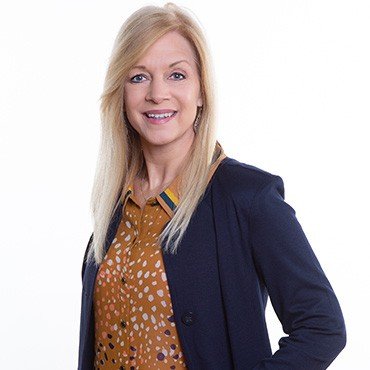
Historically, many companies have viewed innovation through the lens of helping consumers address a need more quickly, efficiently, and conveniently, taking a laser-like focus on creating products and services that get the job done. For example, automobiles were made more fuel efficient to help people cope with rising gas prices, and banks offered automated services to extend when and how customers could conduct transactions.
Today, it’s becoming more difficult to deliver meaningful innovation as consumers’ basic needs are being addressed. Additionally, the rise of the experience economy is impacting the way in which individuals expect to interact with brands.
To provide differentiating and lasting value, companies must take a holistic view of those they serve and reimagine how they can fit into consumers’ lives. I’ll share a couple of approaches that can be used to identify opportunities for experience innovation: one that is journey-centric in nature, and one that uses an expanded jobs-based perspective.
Case Study: A Journey-Centric Approach
Consumer journeys capture the ways and occasions in which consumers form opinions about categories and their relevant brands. These impressions are created not only through consumers’ personal experiences, but also through stories and recommendations from others regarding their frustrations and delights. And since opinions often are developed prior to a consumer becoming a potential buyer, journeys tend to extend well before a purchase decision is made, and continue through the use of a brand and afterwards.
Journeys also document:
- Purchase triggers: events or situations that surface a clear need and motivate the drive to buy.
- Brand touchpoints: tangible places or occasions for a brand to interact with consumers.
- Purchase considerations: brand and/or product differentiators based on consumer needs, experience, expectations, and lifestyles.
- Inflection points: events or information that prompt a consumer to stop or reconsider a purchase.
All these components of the journey represent potential opportunities for brands to innovate the way in which they deliver experiences to consumers. The Insurance Lounge, an Oregon-based insurance company, is a good example of a journey-centric approach to innovation.
As noted in the About Us section, the company bills itself as the category’s first interactive retail storefront:
“Our retail storefront creates an interactive atmosphere for consumers to learn about, shop for, and compare insurance using multiple buying options. Our interactive product boxes give a visual and tangible quality to an insurance product. We can accommodate the mainstream insurance buyer with a traditional appointment or the new age shopper who wants to do much of the research online through our in-store education and quoting kiosks. This new hybrid approach allows Insurance Lounge to be the only retail storefront for insurance that can take care of any type of shopper.”
According to Michael DeLaGrange, Insurance Lounge Founder & CEO:
“The whole Insurance Lounge concept all evolved out of frustrations of what I saw in the insurance industry. I tried to come up with a hybrid that included the online marketplace for insurance and the traditional agency… to create competitive advantages that don’t currently exist in a single format.
We’re open seven days a week so a consumer can come in before work, after work, on the weekends, whenever is convenient for them. We also created an atmosphere where a consumer can shop for any type of insurance in one place. We have access to over 100 different carriers to shop their best rates and plans to make sure you get the best deal and best coverage there is available.”
In this case, the Insurance Lounge used the problematic touchpoints, considerations, and inflection points in the consumer journey to completely reinvent the experience of researching and purchasing insurance. And according to Yelp reviews, the brand has hit a home run:
“I cannot recommend these guys highly enough. They take all the tediousness and confusion out of the insurance buying process. They have access to a wide range of insurers across the country and can find you the best price instead giving up all of your info to get quotes over and over again. They’ll also give you advice and answer those basic questions (the ones you should probably already know the answer to at this point in your life) without feeling like they’re talking down to you. I’ve never had health or dental insurance before and they made it so much less confusing and really took the time to explain what options I had available during the open enrollment period. If you’re lost on what to do and where to go to find affordable insurance, go here!”
Case Study: An Expanded Jobs-Based Perspective
Over the last two decades, Clayton Christensen’s jobs-to-be-done framework likely has become a familiar one. His theory is that consumers buy products and services as a means to address unmet/under-met needs (or “to get jobs done”), and that successful innovation stems from creating products and services to do those jobs.
Without question, this emphasis on identifying the “what” and “how” of getting jobs done is a proven way to initiate innovation. But little is said about the type of experience a brand might deliver as part of getting the job done. By broadening the perspective to include not only what jobs need to get done, but how consumers would like to feel while and after those jobs are being done, adds a whole-person dimension to innovation.
Take, for example, home fitness disruptor Peloton. Initially, the brand’s primary job was to give back time to people as they attempted to reach their fitness goals. According to Peloton CEO John Foley:
“For the young mother, who is 40 years old, who has a 3-year-old napping in the next room, we’re allowing her to take a high energy cycling class without getting a babysitter, and without the travel time.”
But the brand didn’t stop at providing consumers with a state-of-the-art indoor bike. Instead, it created an experience that made people “want to want to work out” by bringing the communal dimension of studio cycling into the in-home environment. The brand encourages competitive riders to pit themselves against fellow Peloton members, while permitting more socially-oriented riders to greet each other and celebrate milestone accomplishments.
The brand’s dedication to innovating the experience has been tremendously successful, allowing it to achieve an unheard of one-year retention rate of 96%.
If there’s one thing the rise of the experience economy has demonstrated, it’s that bells and whistles don’t win the day. Instead, the brands that extend their innovation efforts beyond features and functionality – and provide a delightful, memorable experience – will come out on top.
Send us a note if you’d like to learn more about how you can innovate to improve your customers’ experience with your brand.









